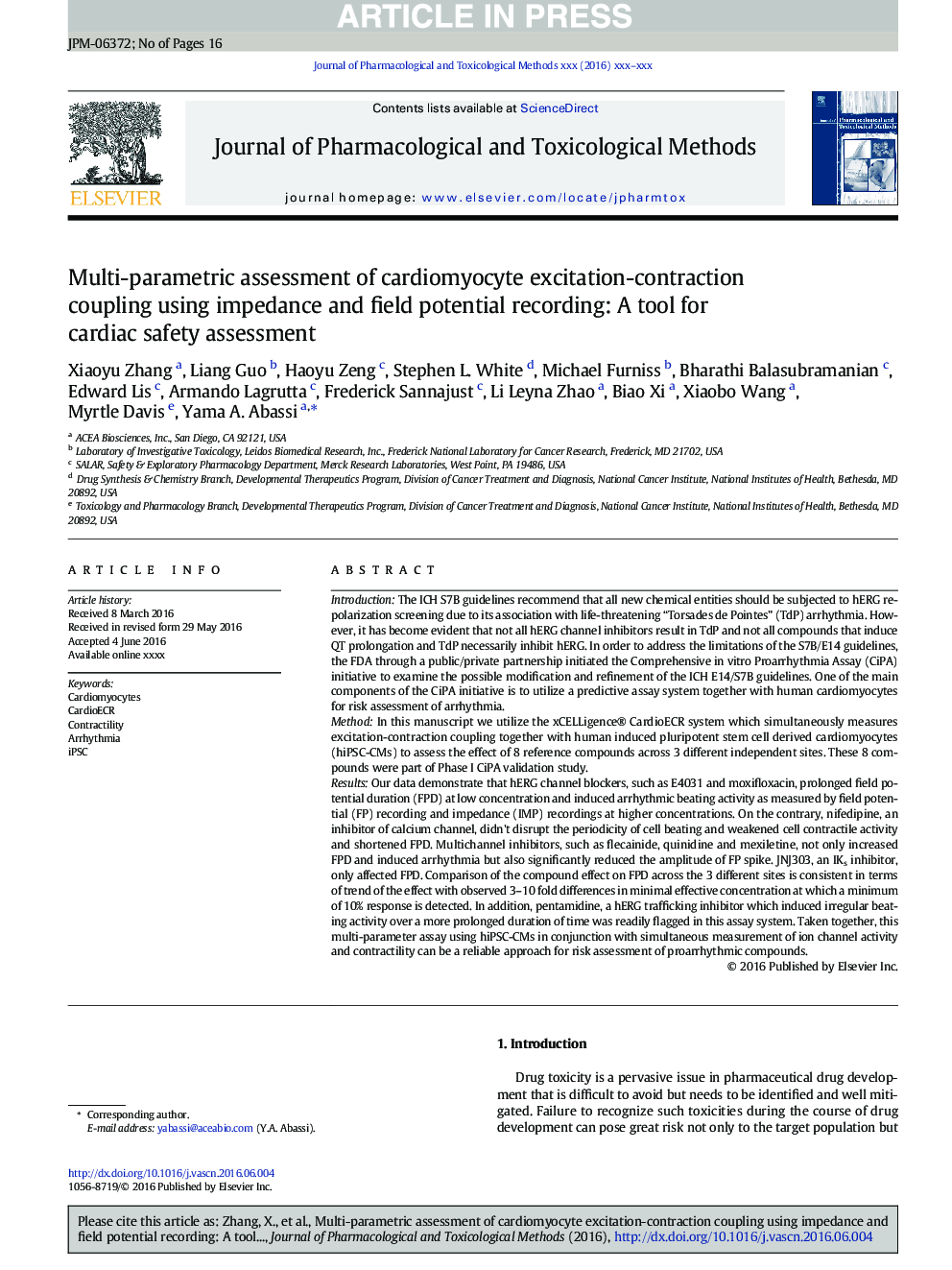| Article ID | Journal | Published Year | Pages | File Type |
|---|---|---|---|---|
| 5556613 | Journal of Pharmacological and Toxicological Methods | 2016 | 16 Pages |
Abstract
Our data demonstrate that hERG channel blockers, such as E4031 and moxifloxacin, prolonged field potential duration (FPD) at low concentration and induced arrhythmic beating activity as measured by field potential (FP) recording and impedance (IMP) recordings at higher concentrations. On the contrary, nifedipine, an inhibitor of calcium channel, didn't disrupt the periodicity of cell beating and weakened cell contractile activity and shortened FPD. Multichannel inhibitors, such as flecainide, quinidine and mexiletine, not only increased FPD and induced arrhythmia but also significantly reduced the amplitude of FP spike. JNJ303, an IKs inhibitor, only affected FPD. Comparison of the compound effect on FPD across the 3 different sites is consistent in terms of trend of the effect with observed 3-10 fold differences in minimal effective concentration at which a minimum of 10% response is detected. In addition, pentamidine, a hERG trafficking inhibitor which induced irregular beating activity over a more prolonged duration of time was readily flagged in this assay system. Taken together, this multi-parameter assay using hiPSC-CMs in conjunction with simultaneous measurement of ion channel activity and contractility can be a reliable approach for risk assessment of proarrhythmic compounds.
Related Topics
Health Sciences
Pharmacology, Toxicology and Pharmaceutical Science
Pharmacology
Authors
Xiaoyu Zhang, Liang Guo, Haoyu Zeng, Stephen L. White, Michael Furniss, Bharathi Balasubramanian, Edward Lis, Armando Lagrutta, Frederick Sannajust, Li Leyna Zhao, Biao Xi, Xiaobo Wang, Myrtle Davis, Yama A. Abassi,
